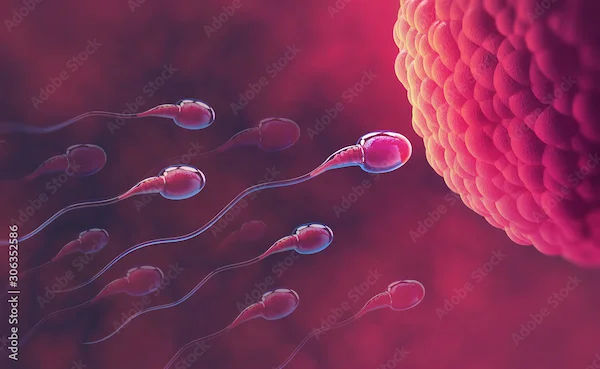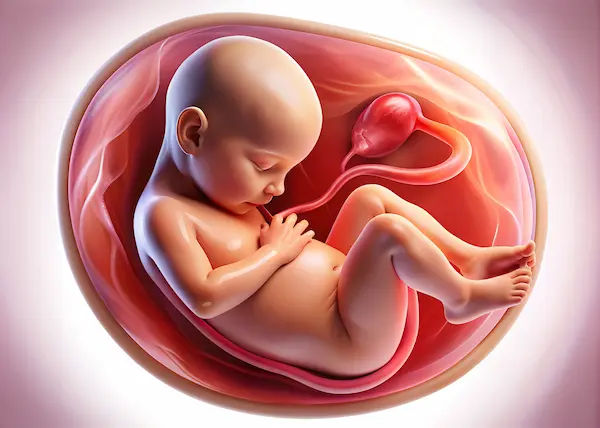The Fertilisation Process: Understanding the Journey to Pregnancy
Explore the fascinating fertilisation process, from ovulation to implantation. Learn about key factors influencing conception and when to seek medical advice.

Written by Dr. Sonia Bhatt
Last updated on 3rd Jul, 2025

Introduction
The fertilisation process is a fascinating and complex biological process which is the starting point of pregnancy. Understanding the fertilisation process is important for prospective parents, as it empowers them with knowledge and can help address any concerns they may have when trying to conceive.
1. Ovulation: The Release of the Egg
The fertilisation process begins with ovulation, a key step in the female reproductive cycle. Every month, under the influence of hormones, one of the ovaries releases a mature egg (ovum). This usually occurs around the middle of a woman's menstrual cycle, approximately 14 days before her next period begins. Ovulation is triggered by a surge in luteinising hormone (LH), which causes the dominant follicle in the ovary to rupture and release the egg into the fallopian tube.
For pregnancy to occur, the egg must be available for sperm to fertilise. The egg remains viable for fertilisation for around 12 to 24 hours after ovulation, so knowing the timing of ovulation is crucial for couples trying to conceive.
2. The Journey of the Sperm
Fertilisation cannot happen without sperm, which is released during sexual intercourse. During ejaculation, millions of sperm are deposited in the vagina, and they begin their journey through the cervix and into the uterus. From there, they travel up the fallopian tubes, where fertilisation occurs.
However, only a few sperm out of millions will make it to the fallopian tube, and the journey is treacherous. The sperm must swim through the cervix, into the uterus, and then navigate through the fallopian tube to find the egg. Sperm can survive in the female reproductive tract for up to five days, which is why conception can occur even if intercourse happens a few days before ovulation.
3. Meeting the Egg: Fertilisation
When sperm reach the fallopian tube and encounter the egg, fertilisation can take place. However, the sperm must undergo capacitation to penetrate the egg's outer layer, known as the zona pellucida. During capacitation, the sperm undergo biochemical changes that enable it to bind to and break through the egg’s protective barrier.
Once a sperm successfully penetrates the egg, fertilisation occurs. The sperm and egg merge and their genetic material combines to form a single cell called a zygote. This marks the beginning of a new life, as the zygote now carries a complete set of chromosomes – 23 from the mother and 23 from the father.
4. The Formation of the Zygote and Early Cell Division
After fertilisation, the zygote begins to divide rapidly in a process known as cleavage. The first division occurs within hours of fertilisation, resulting in two cells. These cells continue to divide and form a blastocyst, which is a small cluster of cells that will eventually develop into the embryo.
As the zygote travels down the fallopian tube towards the uterus, it divides and grows. It also develops from a blastocyst into a more complex structure in this journey. When the blastocyst reaches the uterus, it is ready to implant into the uterine lining, a crucial step for establishing a pregnancy.
5. Implantation: The Journey to the Uterus
The journey of the blastocyst from the fallopian tube to the uterus is a vital part of the fertilisation process. When the blastocyst reaches the uterus, it must successfully implant into the thickened uterine lining, or endometrium, to continue developing.
Hormonal signals have specially prepared the uterine lining, making it the perfect environment for the blastocyst to embed itself. The implantation process can take several days, during which the blastocyst begins forming the placenta, the structure responsible for nourishing the developing embryo.
This process is highly delicate, and in some cases, implantation may not occur successfully, leading to early miscarriage or failed pregnancy. Approximately 50% of fertilised eggs fail to implant naturally due to chromosomal abnormalities or uterine conditions.
However, if implantation is successful, the blastocyst begins producing hormones, including human chorionic gonadotropin (hCG), which signals the body to continue producing progesterone. This prevents uterine lining shedding (which would otherwise cause menstruation) and maintains the pregnancy.
6. Early Pregnancy Detection: The Role of hCG
Once implantation is successful, the embryo starts to secrete hCG, the hormone detected by pregnancy tests. This hormone is essential for maintaining the pregnancy in its early stages by stimulating the production of progesterone, which helps sustain the uterine lining and prevents it from shedding.
Pregnancy tests typically become positive around 7 to 10 days after conception, though the exact timing can vary. At this point, a woman may start to experience early pregnancy symptoms, such as nausea, fatigue, and breast tenderness.
7. Key Factors Influencing Fertilisation Success
Several factors can affect the success of fertilisation and implantation. Following are some of those important factors:
Age: A woman’s fertility declines with age, particularly after age 35. The quality and quantity of eggs reduce over time, reducing chances of fertilisation and successful pregnancy.
Sperm Health: Sperm quality is another critical factor. Low sperm count, poor motility, and abnormal sperm morphology can lower the chances of successful fertilisation.
Lifestyle Factors: Smoking, excessive alcohol consumption, and obesity can all negatively impact fertility in both men and women. Maintaining a healthy lifestyle, including a balanced diet and regular exercise, can improve fertility.
When to Seek Medical Advice
While many couples conceive naturally, some may face challenges. If you’ve been trying to conceive for over a year without success (or six months if you are over 35), it’s advisable to seek medical advice. A specialist can assess the situation and problem and suggest possible treatments, like medication, assisted reproductive technologies (ART), or in vitro fertilisation (IVF).
Conclusion
The fertilisation process is a beautifully complex sequence of events which begins with ovulation and ends with implantation. Each step is critical for achieving a successful pregnancy, and understanding this process can help couples become more informed and empowered in their journey to parenthood. By maintaining good reproductive health, tracking ovulation, and addressing any fertility concerns early, couples can optimise their chances of conceiving. If pregnancy doesn’t occur within a reasonable time frame, medical intervention can provide further support. Remember that fertility is a delicate and personal subject; every couple’s journey is unique. You can take proactive steps toward achieving your pregnancy goals by staying informed and seeking professional guidance when needed.
Consult Top Obstetrician-Gynecologists
Consult Top Obstetrician-Gynecologists

Dr. Alapati Jyotsna
Obstetrician and Gynaecologist
4 Years • MBBS MS Obstetrics and Gynaecology
Visakhapatnam
Apollo 24|7 Clinic - Andhra Pradesh, Visakhapatnam

Dr Swatika Kumari
Obstetrician and Gynaecologist
19 Years • MBBS, DGO, DNB Obstetrics & Gynaecology
Nashik
Apollo 24|7 Clinic - Maharashtra, Nashik

Dr. Priyanka Surisetty
Obstetrician and Gynaecologist
8 Years • MBBS, DGO
Visakhapatnam
Apollo 24|7 Clinic - Andhra Pradesh, Visakhapatnam

Dr. Parul Sharma
Obstetrician and Gynaecologist
8 Years • MBBS, MS (Obstetrics & Gynaecology)
New Delhi
THE DOCTORS NESST, New Delhi

Dr. Sreeparna Roy
Obstetrician and Gynaecologist
8 Years • MBBS , MS (OBSTETRICS & GYNAECOLOGY), Fellowship in Infertility, Endoscopy & Ultrasonography), Fellowship in Laparoscopy & Hysteroscopy,DRM
Barasat
Diab-Eat-Ease, Barasat




